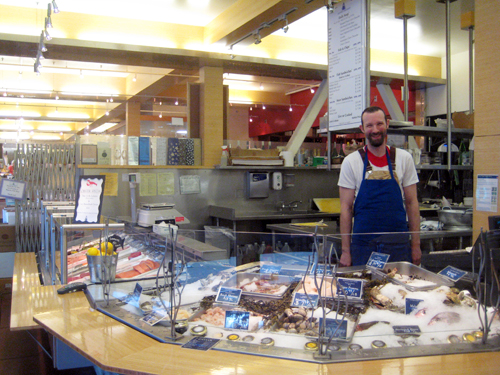
Sean of Hapuku Fish Shop at Market Hall
You wouldn't think that something as mundane as making a sandwich for my daughters on a weekend afternoon would be loaded with controversy, but it is. You see, my daughters love tuna fish sandwiches. Easy enough, right? We all grew up on sandwiches made of canned white tuna mixed with mayonnaise and served with a pickle. Yet although this quintessential American lunch may seem benign, it's something I refuse to serve my children. The tuna fish sandwich we all grew up on is now too controversial, and potentially dangerous, for my daughters to eat.
As a recent San Francisco Magazine article entitled "The New School of Fish" by Erik Vance has helped highlight, eating carnivorous fish like tuna is unsustainable. But as a mother, I'm equally (if not more) concerned with mercury levels in the foods I give my family, along with antibiotics founds in many farmed fish stocks. Yes, I want to support sustainable fishery, but I also want to make sure I'm not dousing my children's bodies with poison.
Mr. Vance's exploration of fish sustainability and Forum's latter discussion on the topic were both incredibly informative and helpful to me as a consumer, yet I'm starting to realize that although I know more now than I did before, I am still woefully uninformed. One of the big discussions on Forum was that although fish markets and restaurants may think they're offering sustainable and healthy choices, they later find out that they were misinformed, and in some cases lied to, by distributors. On Forum, Craig Stoll of Delfina said that he found out only that morning that the Petrole Sole he offered the night before had questionable sustainability issues. If he can't figure it out, how do ordinary consumers stand a chance?
Over the years I've struggled to find a solid list of fish that I can give my family, but like a neighborhood built on landfill, what seems solid at one moment can buckle the next. So although a type of fish may seem okay one year, an El Nino season, a hurricane somewhere, an oil spill, or simply new scientific information about fish habitats and levels can change everything.